Table of Contents
The house has been staged, the photos are gorgeous, and the listing is ready to hit the market. Now what?
While landing the listing is a big first step, real estate marketing professionals know that the work is far from over. It's time to get as many eyes as possible on the listing through social media content, ad campaigns, and good old-fashioned word of mouth.
After all that effort, how do you track the progress of these marketing activities? It’s not just for your reference–if you work at a marketing agency, you’ll have to share results with realtor clients. Alternatively, marketing teams at large-scale real estate firms need to report on these real estate marketing efforts to sellers who are waiting on offers.
That’s where real estate marketing metrics come in. This data is a powerful asset when finetuning content, determining the most viable lead sources, and creating a solid strategy.
In this article, we’ll explore the metrics that all real estate professionals should know, along with their use cases and reporting tips.
What Are Real Estate Marketing Metrics?
When it comes to real estate, online research involves more than looking at properties. Buyers and sellers are also looking for the right realtors and real estate brokerages to help them accomplish their goals.
Real estate marketing campaigns lay the groundwork for these connections, catching the attention of potential clients and guiding them down the sales funnel.
In a nutshell, real estate marketing metrics are a way to monitor the effectiveness of campaign efforts. They’re used to:
Understand what type of content resonates with target audiences the most (e.g., Instagram reels may have greater engagement than static pictures).
Refine the ideal client profile (ICP) and share information that meets their pain points (e.g., providing more clarity on the home-buying process).
Evaluate whether real estate marketing marketing efforts generate ROI and meet goals (e.g., more website clicks or form signups).
See which real estate marketing campaigns attract the most qualified leads. This helps real estate agents to focus on prospective clients with the most conversion potential.
Begin With Goals and KPIs
It’s tempting to hit the ground running when you’ve got a great real estate marketing idea. However, a better approach is deciding on your goals upfront. Then, decide on your marketing efforts and choose KPIs that align with your objectives.
Speaking of KPIs, there’s something important to remember. All KPIs are metrics, but not vice versa.
Metrics are quantifiable measures but don’t always reflect your real estate business goals. Alternatively, KPIs are directly tied to your objectives. These benchmarks assess your goal progress and provide an opportunity to improve the real estate marketing strategy (when needed).
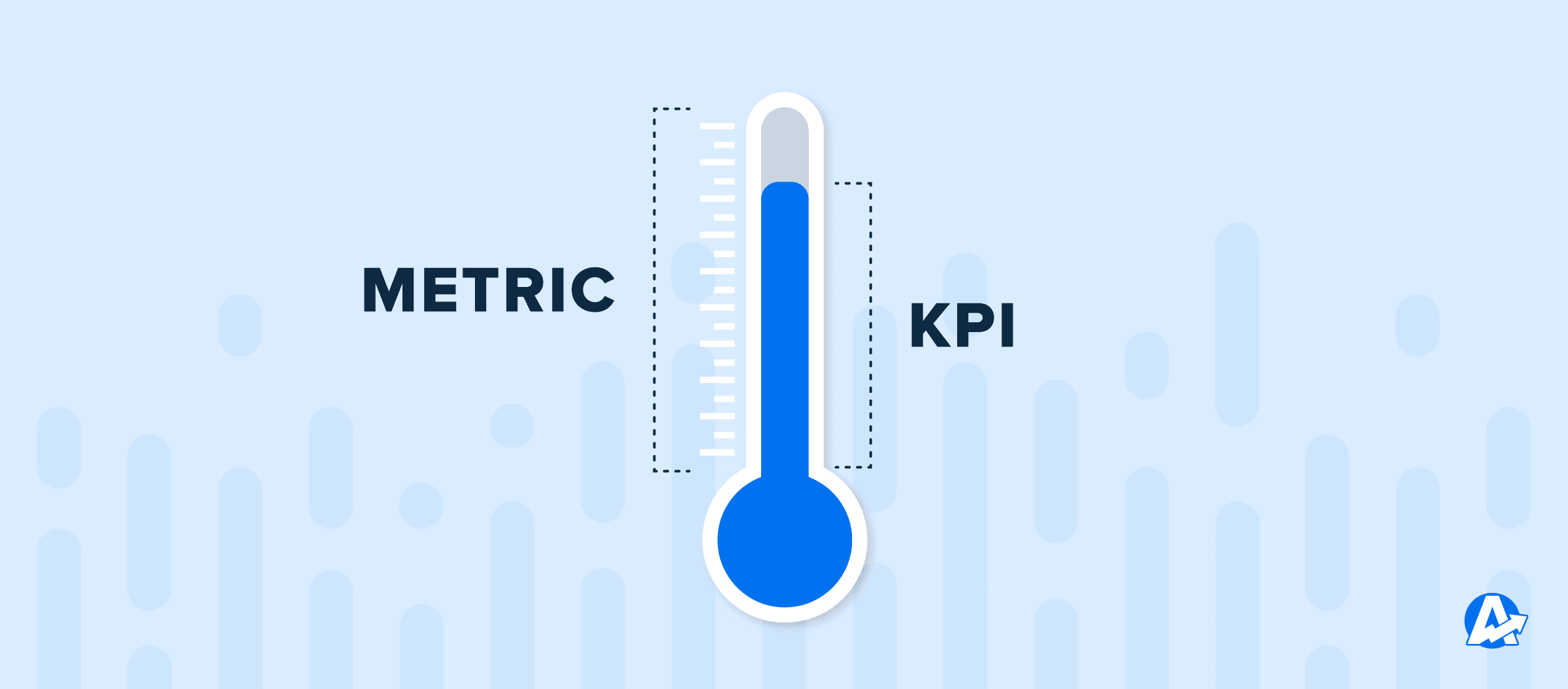
In real estate, campaign objectives often include:
Compelling prospective sellers to contact the brokerage and set up a listing appointment.
Increasing the number of showings on existing listings.
Catching the attention of prospective buyers and encouraging them to sign on for representation.
For each of these goals, the KPIs will be different. The metrics used to measure the progress of the KPIs will also differ.
Clear objectives help us define the direction and purpose of the marketing campaign. They provide a clear focus and ensure that all efforts are aligned toward achieving the desired outcomes. They provide direction, measurement, accountability, resource allocation, and strategy development.
Anatoly Zadorozhnyy, SEO Manager, Marketing1on1
For example, say you’re running PPC ads to land form signups for an upcoming open house. A high number of Impressions may look good on paper while providing insight into your ad reach. However, this metric doesn’t always result in a tangible outcome–a PPC ad seen by 20,000 local buyers may only wind up bringing a handful of actual humans through the door.
In this scenario, keeping a watchful eye on Impressions still matters. After all, it’s important for your ads to have visibility. However, a more actionable KPI would be Form Submission Rate (e.g., 10%).
This metric directly reflects how many users fill out the contact form on your landing page. To assess progress toward this KPI, it makes sense to monitor Impressions alongside related metrics (e.g., Click-Through Rate (CTR), Time on Page).
So, how does this work in action?
Say you’re noticing a low Form Submission Rate. Your number of Impressions and CTR are both through the roof. However, users exit your landing page after just a few seconds (as seen from Time on Page). To fix this, you may decide to adjust the page design, shorten the landing page copy, and ensure subject lines aren’t misleading.
The takeaway? Decide on your goals upfront. Then, choose KPIs that are actionable, directional, accurate, and measurable. Finally, you’ll be able to assess which real estate marketing metrics make the most sense to track.

Monitor the progress of your goals through visual progress bars. Ensure your marketing plan stays on track with AgencyAnalytics–it’s free for 14 days.
8 Top Real Estate Marketing Metrics to Track
After you’ve decided on your marketing goals, it’s time to put your plan in motion. Monitor progress by using these actionable real estate marketing metrics.
1. Cost per Lead (CPL)
Marketing campaigns must make financial sense.
Cost Per Lead measures how much is spent to acquire each lead that’s drawn in through your marketing efforts. This may include:
Listing on external real estate websites like Realtor.com and Zillow.
Building or updating a real estate firm or agent’s website.
Social media platforms (e.g., direct messaging, comments).
PPC advertising (e.g., Google Ads, Microsoft Ads).
Print advertising (e.g., a full-page ad in the local newspaper or a billboard).
Local events (e.g., open houses, sponsoring community events).
As a quick reference, here’s how CPL is calculated:

So, how does CPL work in a real-life scenario?
Let’s say you’re a realtor who wants to attract more clients (i.e., prospects who are buying or selling properties).
To do so, you’ve spent $1000 on Google Ads. Your ultimate objective is to encourage these prospective clients to reach out via email and agree to be represented by your company. After a month, these ads generated 50 leads at a CPL of $20.
Additionally, you’ve decided to run Facebook Ads for $3000 with the same goal, which resulted in 30 leads at a CPL of $100.
Marketing Effort | Cost | Leads Generated | Cost per Lead (CPL) |
|---|---|---|---|
Google Ads | $1000 | 50 | $20 |
Facebook Ads | $3000 | 30 | $100 |
Based on the figures above, Google Ads gave more bang for your buck. This data helps identify the most cost-efficient methods to optimize the campaign and attract more leads.
However, it’s critical to also consider lead quality. A high number of open house attendees may not mean much if they’re passively browsing the real estate market and not serious about making a purchase or signing a buyer representation agreement.
2. Client Acquisition Cost (CAC)
One of the primary goals of real estate marketing is turning warm leads into new clients–whether buyers or sellers.
Client Acquisition Cost (CAC) quantifies exactly how much you’ve spent acquiring high-ticket leads that turn into buyers. It also identifies which efforts lead to the most revenue, which should be a point of focus in your real estate marketing plan.
As a quick reference:

Not sure what falls under sales and marketing expenses? Generally, this should include:
Ad spend on marketing campaigns.
Salaries of sales and marketing staff.
Participation costs (e.g., a sign-up fee for a trade show).
Marketing collateral (e.g., printing brochures for a listing).
Recurring costs (e.g., a monthly fee to post listings on a real estate website).
To put this into perspective, let’s take an example.
Say you’ve spent $10,000 on online advertising and in-house staff salaries (i.e., sales and marketing expenses). For the quarter, you acquired ten new clients who closed on property sales. Therefore, your CAC works out to $1000, which is a drop in the bucket compared to your $10M in profit.
On the other hand, imagine you’re running a boutique real estate business. To attract new clients, you pull out all the bells and whistles. Top-notch video production, PPC ads, onboarding more real estate agents… you name it.
Your total sales and marketing costs worked out to $300K for the year and only resulted in 1 client who closed a property deal for $400K. By the time you’ve covered other operational costs (like your city office rental), you’re left with a modest $10K profit.
At this point, a CAC of $300K doesn’t seem worth it–it’s expensive to sustain this acquisition cost and doesn’t result in a significant profit. Therefore, CAC is a way to take a hard look at your expenses and decide whether alternative options are needed (e.g., choosing more budget-friendly suppliers or lowering marketing spend).
Look at the early stages of the new client sales funnel and identify any inefficiencies or bottlenecks driving up CAC. For example, suppose we're spending a lot of money on lead generation but are not seeing a high Conversion Rate. In that case, we may need to revisit our targeting or messaging to ensure we attract the right target audience.
Adam Binder, Founder & CEO, Creative Click Media

Integrate a CRM like Salesforce with AgencyAnalytics to visually monitor the sales pipeline. Track expected revenue, closed deals, and more–sign up for a free 14-day trial today.
3. Showings per Sale
A statement like, “I did ten showings of this property today!” sounds good in theory.
However, it won’t mean much if none of these viewers were prospective buyers (as any licensed real estate agent will tell you). After all, there’s only so much time in the day, and it should be spent on promising leads.
Showings per Sale is a way to understand how much effort it takes to sell a specific property.

It’s also helpful to:
Refine Property Listings: Properties that require fewer showings may be more in demand. This may guide what types of properties to sell or focus on.
Identify Property-Related Issues: If a property has a high number of showings with no sales, it may be a result of:
A sky-high cost that the target market can’t afford.
Outdated decor or staging.
A need for repairs.
External challenges (e.g., a less desirable location, noise pollution).
Assess the Performance of Real Estate Agents: If you notice specific agents have many showings without sales, they may need additional training or coaching.
4. Visits
When building a real estate brand, it’s important to demonstrate authority, build trust, and attract clients over time.
Monitoring Visits is a way to understand a real estate brand's reach and popularity. To complement this metric, look at the demographics to ensure you reach the intended market.
Track the number of Visits across your various efforts (e.g., property listings on an MLS, realtor websites, and social media). This helps identify which primary marketing channels the target audience uses.
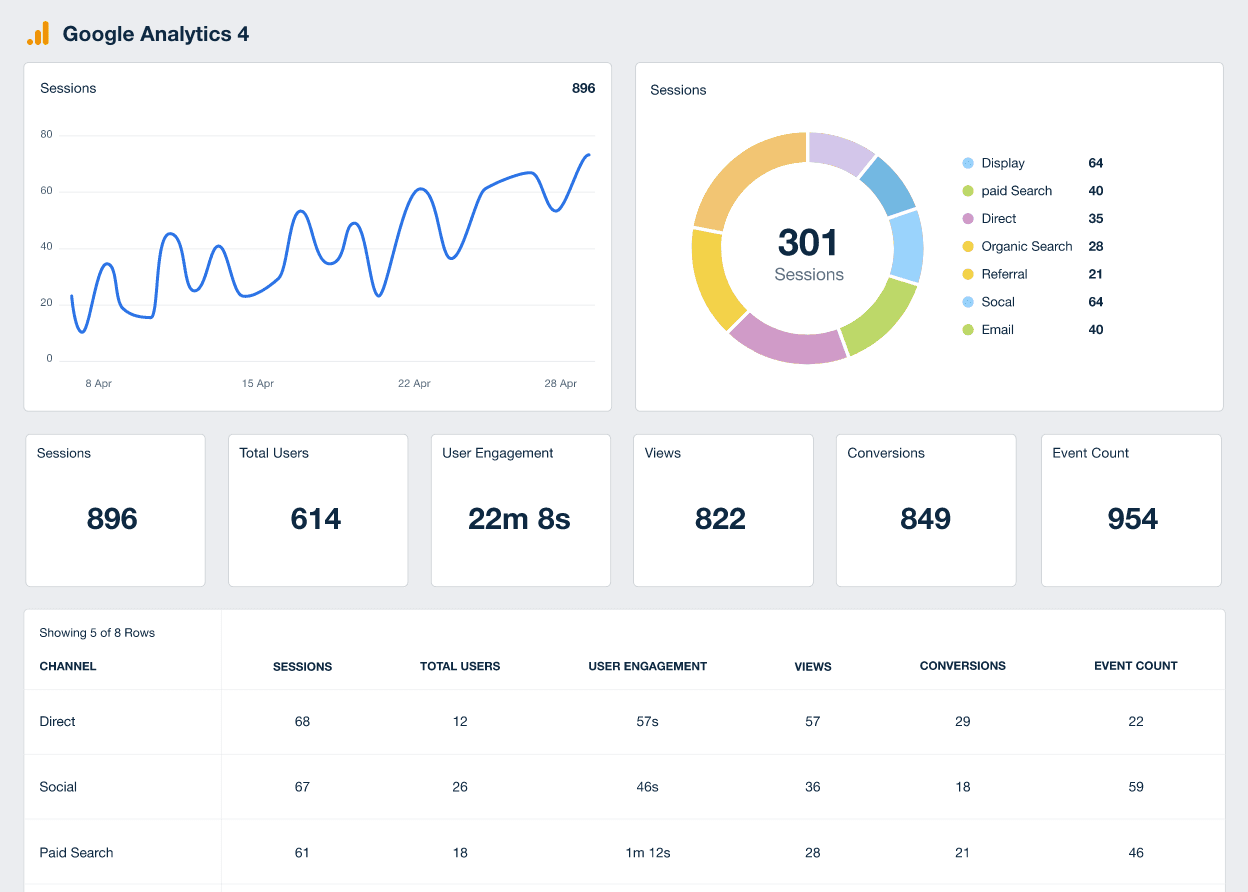
Improve your marketing strategy by identifying the content that resonates most. Attract more leads and build a solid brand online–try AgencyAnalytics by signing up for a free 14-day trial today.
While Visits don’t paint the entire picture, they’re useful for comparing cross-channel performance and developing more real estate marketing ideas.
For instance, your newly listed properties in Ohio might attract more Visits on an MLS (Multiple Listing Service) compared to your own website. Alternatively, your blog posts on the home buying process may attract more Visits than other content types.
If you’re looking for ways to spice up your website or create an engaging social media presence? Here’s some inspiration:
Demonstrate real estate expertise by mentioning the team’s years of experience, testimonials from past clients, and accolades (e.g., an award from a national association).
Share pictures and bios of real estate agents and any areas of expertise (e.g., commercial real estate). It also helps to build a personal connection with your target audience.
Offer online marketing materials that engage potential clients and include proper context (e.g., local images, virtual home tours).
Join local Facebook groups and consider sponsoring local events. Being present within the local community creates opportunities to connect with potential buyers and sellers without having to invest in further social media marketing.
Create engaging and relevant content, such as:
A real estate podcast on current market trends.
An infographic on the home buying process.
A video series on navigating the housing market during a slowdown.
A blog post series on “What to Look for in a Home Inspection.”
Incorporate fun elements like virtual staging. This form of experiential marketing drives makes it easier for prospective buyers to see themselves living in a space.

5. Click-Through Rate (CTR)
Brand awareness is one part of the puzzle–but to land more commissions, prospective clients need to interact further.
That’s where a metric like Click-Through Rate (CTR) comes in. It measures the percentage of times users click on a link embedded in your content (e.g., in social media posts, PPC ads, or email marketing campaigns). CTR provides more insight into user behavior and pinpoints what encourages prospective clients to engage further.
Was it a website link on an Instagram Story about a recently constructed condo in New Orleans? Perhaps it was a blog post in your newsletter about recent market trends. Whatever the case, use this metric to create more click-worthy content that drives action.
Clicks are the biggest indicator of qualified traffic to your website. These users have made the extra step to seek additional information and often show a promising Conversion Rate.
Valerie Jennings, CEO, Jennings Social Media & MarTech

If you observe a low or falling CTR, have no fear! Use these tactics to improve results:
Research user-relevant keywords, meta descriptions, and titles. Use a tool like Ahrefs or Semrush to find these terms (e.g., “single house dwelling Soho neighborhood”). Also, infuse them into your content to improve search visibility.
Use compelling subject lines that encourage users to learn more. Incorporate numbers where possible (e.g., “5 Tips for Selling Your Home”).
Ensure ad copy is clear, compelling, and targeted to your audience. Use high-quality images or videos of properties to grab attention for image-based ads. It’s also a good idea to highlight unique features or selling points.
Use strong Call-to-Actions (CTAs) that include action-oriented language (e.g., "View Now," "Learn More," or "Schedule a Visit.”).
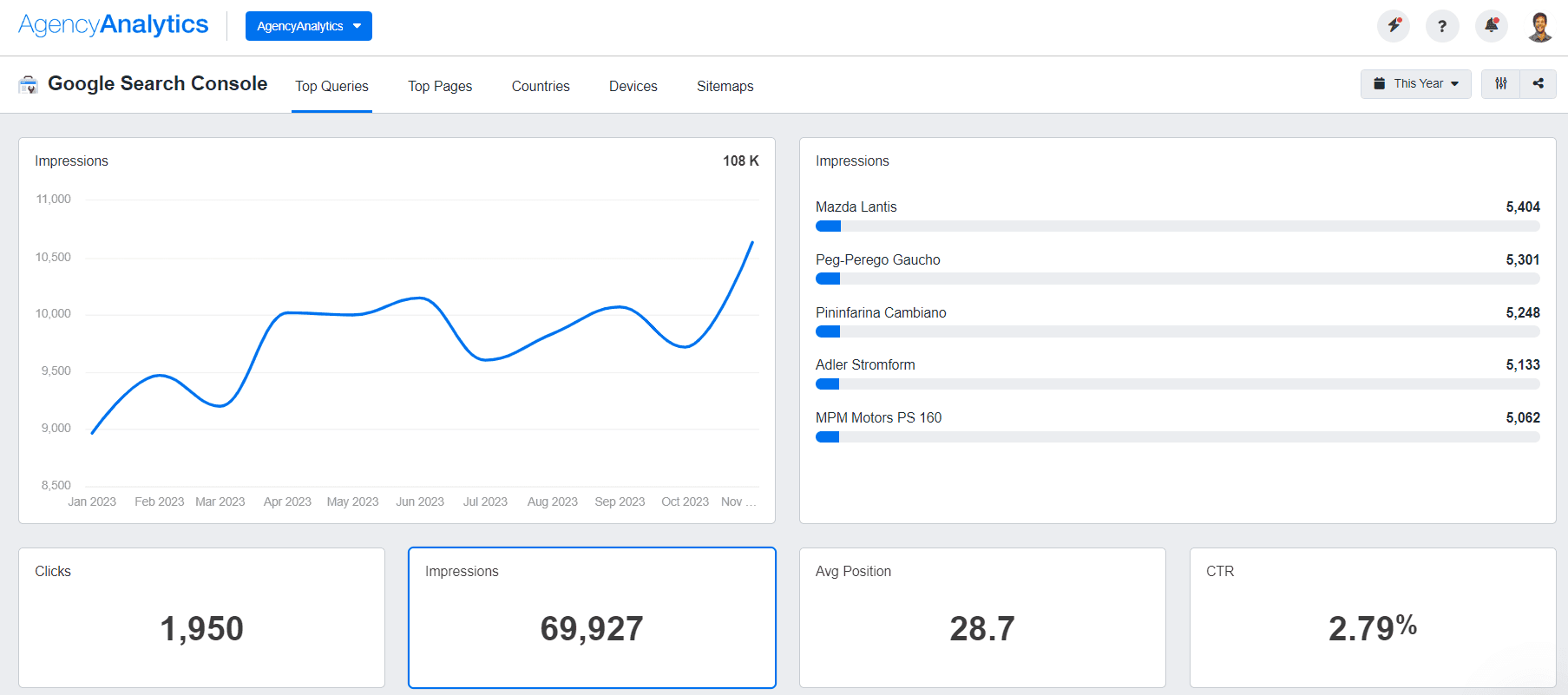
Use a platform like Google Search Console to identify any site issues, changes to search visibility, and keywords with the most CTRs. Explore the full range of integrations in AgencyAnalytics, free for 14 days.
6. Conversion Rate
Beyond Clicks, there’s another piece of the puzzle–Conversion Rate. This real estate marketing metric measures how many users take a desired action after viewing or clicking on your content.
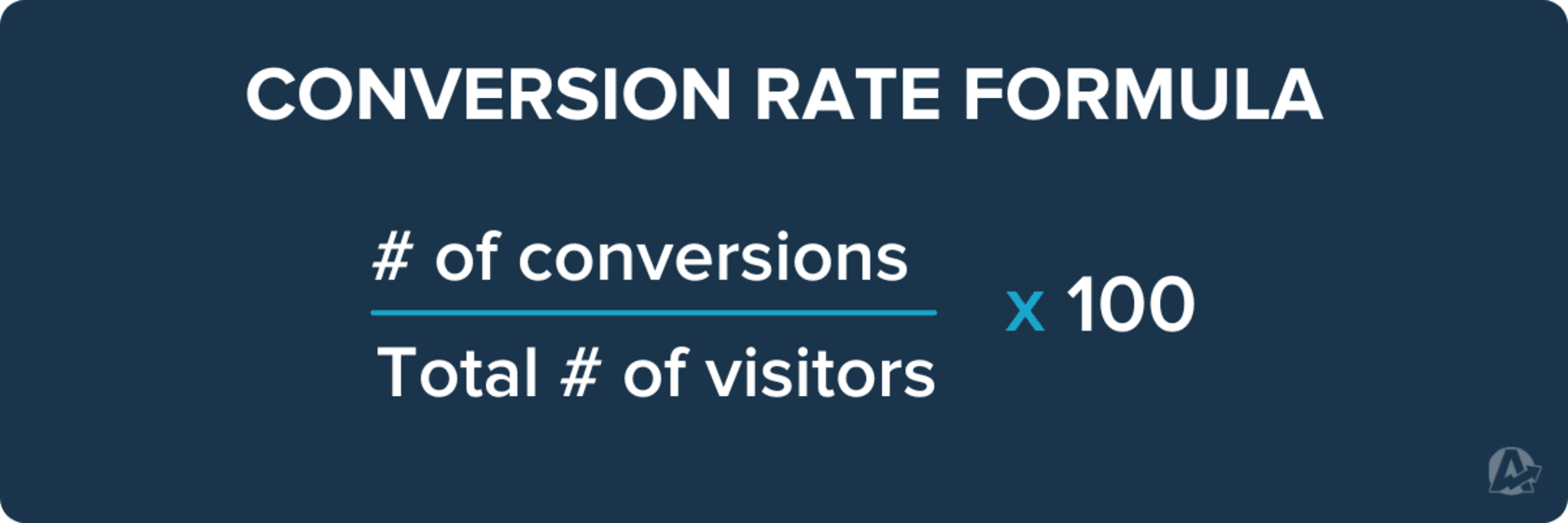
So, what does a Conversion look like for real estate marketing? Take the examples below:
Filling out a signup form on a dedicated landing page (e.g., “Join Our VIP List: Access to Off-Market Deals & More").
Signing up for an email newsletter on a realtor’s website.
Confirming attendance for an upcoming open house through a Facebook event invite.
Booking an in-person property showing by clicking the link in a real estate agent’s Instagram bio.
Requesting more information after viewing a virtual tour on Vimeo.
If you’re noticing a low Conversion Rate, there may be a few reasons–let’s explore below.
Reason | Solution |
|---|---|
Generic email content that isn’t suited to user needs. | Segment email lists according to interests and profiles (e.g., first-time homebuyers, previous real estate investors). Then, send newsletters with relevant listings or content (e.g., ‘Download the First-Time Home Buyer Guide.) |
The visuals aren’t compelling enough. | If budget permits, use professional photos or videos, integrate 360° virtual tours, and explore interactive floor plans. Incorporate these materials across platforms like social media, external listings, and the realtor website. |
Landing pages aren’t well-optimized. | Ensure these pages load quickly and contain enough CTAs. Also, reduce its length where possible and cut unnecessary details (e.g., properties above budget for a specific target market). |
Property details are missing. | Include all property-relevant information, such as address, the number of bedrooms, bathrooms, furnishings, square footage, and amenities. |
Your content isn’t localized. | Infuse local-sensitive keywords in content and ads (e.g., “3-bed house in South Beach Miami for sale). Mention locally-based features (e.g., walking distance from South Beach, restaurants, and local businesses). |
7. Leads by Source
Knowing where your most viable leads come from is powerful.
Monitoring Leads by Source is essential for investing in the right channels and reallocating resources when needed.
For example, do prospective buyers reach out after discovering a Google Business Profile? Continue strengthening this effort by sourcing more client reviews, adding property photos from the local market, and ensuring accurate contact information.
Remember, though, it’s not always about generating more leads. Quality matters more than quantity.
For example, ten serious prospects may yield more revenue for your real estate business than one hundred unqualified leads.
If we're qualifying leads that aren't a good fit for our business, we may be wasting resources on acquiring customers, which is unlikely to generate significant value over time. By refining our lead qualification process, we can focus on acquiring customers who are more likely to create long-term value for our business.
Adam Binder, Founder & CEO, Creative Click Media
To get the most from this metric:
Ensure your CRM is set up correctly and integrates data across all lead sources. For a more user-friendly experience, use a client reporting tool to stream this data into visual dashboards or reports.
Determine the sources that produce the most high-intent leads (i.e., those that are most qualified to buy or sell properties).
Allocate more budget and resources to high-performing channels. For example, Google Ads may produce more qualified leads than Facebook Ads.
Customize content strategies for each of your primary marketing channels. For instance, leads on social media may value educational content more than your email marketing subscriber list.

Analyze your lead sources and invest in the most profitable platforms. Help real estate agents maximize their time–track metrics with AgencyAnalytics, free for 14 days.
8. Marketing Return on Investment (ROI)
After you’ve put in all that effort, you’ll want to know whether it’s paid off.
Marketing Return on Investment (ROI) assesses the impact of your campaigns and whether they have resulted in a net profit. In other words, the money invested in real estate marketing should generate revenue (i.e., property sales) well beyond the cost of expenses.
More specifically:

Here’s a breakdown of each term:
Revenue from Real Estate Marketing: The total income generated from property sales that are directly attributed to your marketing efforts.
Cost of Real Estate Marketing: All expenses associated with your marketing activities. This includes advertising costs, creating collateral, subscriptions for digital marketing tools, and salaries.
For example, say, a real estate agent spends $5,000 on social media ads, email marketing, and external property listings.
This marketing investment leads to a property sale and $50,000 in commission. Based on the formula above, the net profit works out to $45,000 ($50,000 in revenue minus $5,000 in costs) and an ROI of 900%. That means for every dollar spent on marketing, this effort generated $9 in profit (which is excellent).
What if you wanted to calculate marketing ROI across multiple channels? No need for manual calculations–just use a client reporting tool and create a custom metric. It’s a nifty way to collate revenue across multiple marketing channels and their associated costs.
The best part? It’s all automated, so you don’t have to whip out a calculator or rely on complex spreadsheet formulas. Here’s exactly how to do it in AgencyAnalytics.
If your marketing ROI is less than favorable, not to worry–follow these actionable tips:
Redirect funds from underperforming channels (e.g., reducing ad spend from print advertising and reallocating it to Microsoft Ads).
Use a lead scoring system on your CRM. It’s a way to identify the most promising leads and their current engagement levels.
Improve the lead screening process. For example, include a question like “Are you currently pre-qualified for a mortgage?” on a signup form. This ensures that real estate agents spend the most effort on potential buyers.
Conduct a competitor analysis and explore ways to form a unique selling proposition (e.g., including more virtual tours).
Consider niche marketing. For instance, if the majority of sales were commercial real estate, perhaps it’s time to focus on this specialty.
And there you have it! Use these metrics to ensure things are going as they should, and remember to monitor them at regular intervals.
If you work at an agency, you’ll have to share marketing results with your real estate clients. Alternatively, the marketing team at a large-scale real estate firm often reports on these efforts to upper-level management (and to sellers who are eagerly awaiting the sale of their property).
With so much at stake, there’s little room for overwhelming data and time-consuming manual extraction of real estate metrics across multiple platforms.
No need to toggle between platforms or rely on outdated manual reporting methods. Simply use a client reporting tool like AgencyAnalytics!

Use AgencyAnalytics to access real-time marketing dashboards and sleek report templates. Revolutionize your reporting experience today by signing up for a free 14-day trial.
Tips for Reporting on Real Estate Marketing Metrics
Reporting doesn’t have to take all day. With AgencyAnalytics, consolidate data across 80+ platforms into one centralized hub.
Collecting critical data all in one spot is amazing and has given us time back. Tracking SEO, PPC, social media, and email marketing campaigns can be time-consuming. Having dashboards and report templates is game-changing.
Justin Hual, Co-Founder + COO, HIP Creative
To create the most impactful reporting, here are a few best practices to follow.
Use a Pre-Built or Smart Reporting Template
Creating a report from scratch is time-consuming, especially when you’re managing multiple real estate marketing campaigns.
Luckily, AgencyAnalytics offers pre-built reporting templates. Check out some examples below!
Multi-Channel Report Templates | Platform-Specific Report Templates |
|---|---|
In a few clicks, automatically stream your real estate marketing data into sleek, professional reports.
Need to move things around or add additional data? No problem, simply drag and drop widgets or add text boxes. When you’re done, create an automated report schedule so you don’t forget to send it out.
AgencyAnalytics report templates have significantly reduced the time required to create reports for our clients by 5X. After integrating Google Ads, Google Search Console–or any other of the dozens of platforms that connect with AgencyAnalytics–you can create a report in less than a minute. Plus, it’s ready to send to a client right away.
Graham Lumley, Director of Growth Marketing, Blackhawk
Here’s a bonus–take advantage of the new Smart Reports feature. In just 11 seconds, create reports that are specific to your firm or client’s integrations.
Showcase the Brand
It goes without saying: Branding is key. It’s a way to showcase identity, create recognition, and demonstrate professionalism.
Why leave reporting out of the equation? You don’t have to–simply use the white-labeling feature to reinforce the real estate brand. Whether you’re sending a report to a client in the luxury real estate industry or sharing it with your firm’s CFO, this added touch goes a long way.
AgencyAnalytics' white labeling feature allows us to present dashboards and reports under our agency's branding, reinforcing our brand identity and professionalism. This consistent branding builds trust and positions our agency as a reliable partner in our clients' success.
Jessica Crist, Production Manager, High Five Media
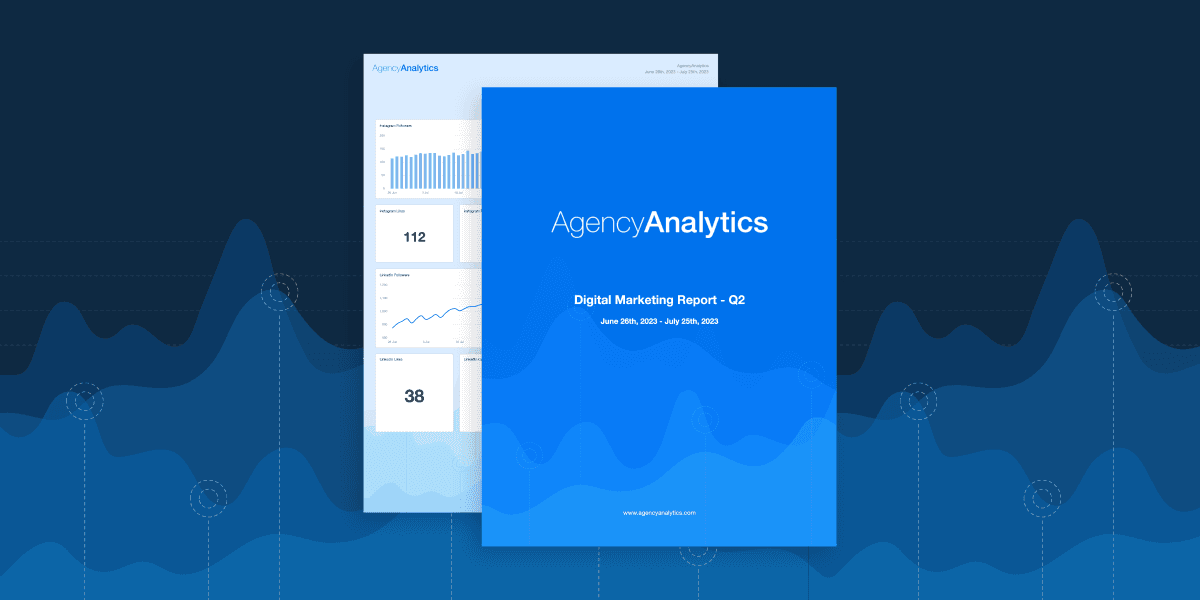
Transform the reporting experience from bland to brilliant. Add your logo, brand colors, and a custom cover page–try this feature in AgencyAnalytics, free for 14 days.
Track Marketing Results in Real-Time
What if you need to check in on ongoing real estate marketing campaigns?
No need to wait till the end of the month–use a visual dashboard. That way, you’ll identify any issues that could affect end performance (e.g., a digital ads bidding strategy that’s not competitive enough).
Similar to reports, explore a range of pre-built dashboard templates to save time and improve efficiency. If you want a more tailored approach, build your own custom dashboard–it’s that simple.
Since we’ve been using AgencyAnalytics, I don’t think we’d ever be able to go back to manual reporting! Creating, generating, and sharing reports has never been easier, and our clients love the fact they can follow our activity and their stats through real-time dashboards. Everything is simplified, accessible, and beautifully presented.
Claire Aldridge, Digital Marketing Specialist, Victory Digital
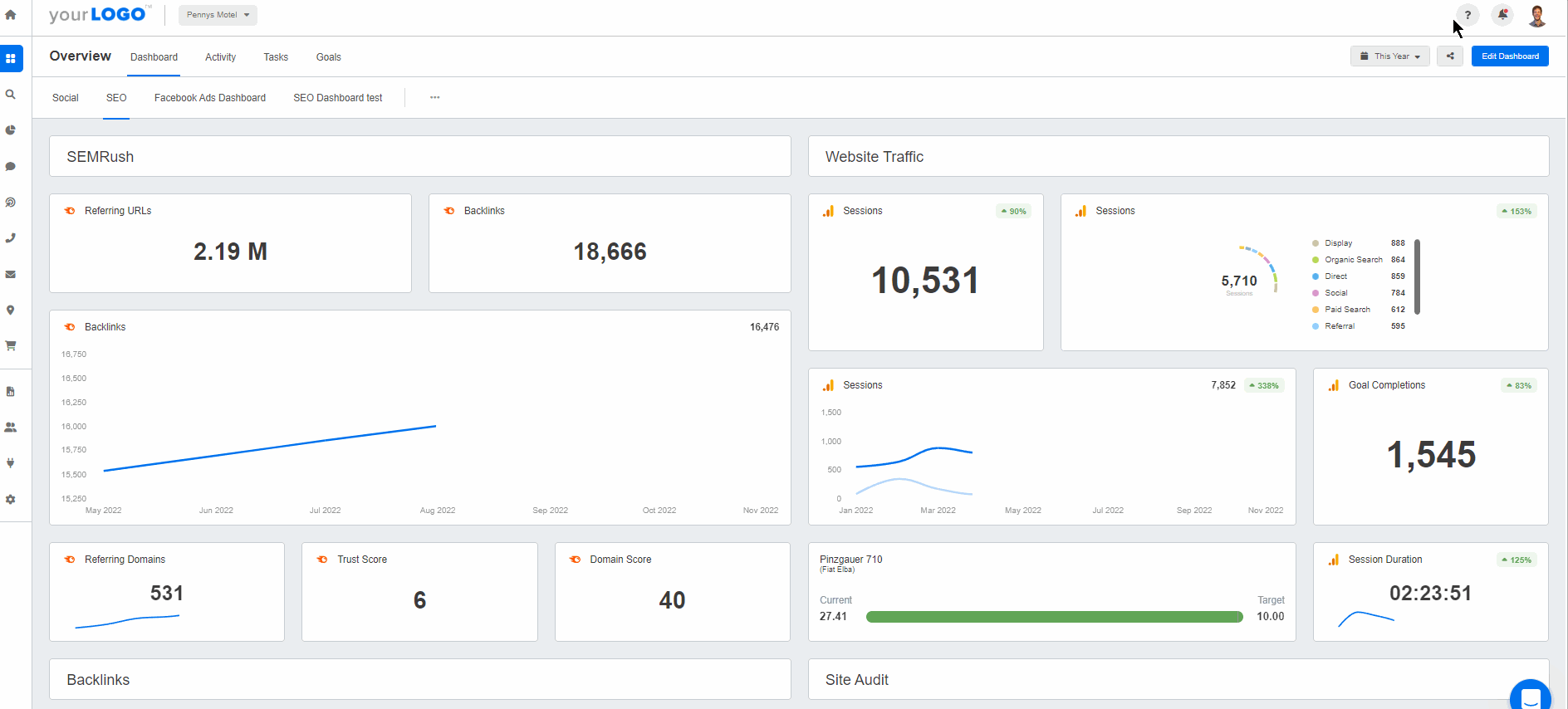
Make Informed Decisions With a Powerful Reporting System
As we’ve covered, real estate marketing metrics are a way to monitor performance and invest in the campaigns that produce the best results. One metric doesn’t tell the entire story–it’s about tracking various data points and making sense of the bigger picture.
Whether you work at a niche real estate agency or you’re on the marketing team of a real estate firm, take the time to analyze performance. It’s the only way to create impactful content, improve marketing performance, and demonstrate results.
Reporting on the numbers is easier than you think–automate the entire process with a tool like AgencyAnalytics. That way, you’ll have more time to focus on closing more deals.
Take the hassle out of reporting and invest in a robust system that does most of the work. Improve your efficiency and save time today–explore AgencyAnalytics, free for 14 days.

Written by
Faryal Khan is a multidisciplinary creative with 10+ years of experience in marketing and communications. Drawing on her background in statistics and psychology, she fuses storytelling with data to craft narratives that both inform and inspire.
Read more posts by Faryal KhanSee how 7,100+ marketing agencies help clients win
Free 14-day trial. No credit card required.





